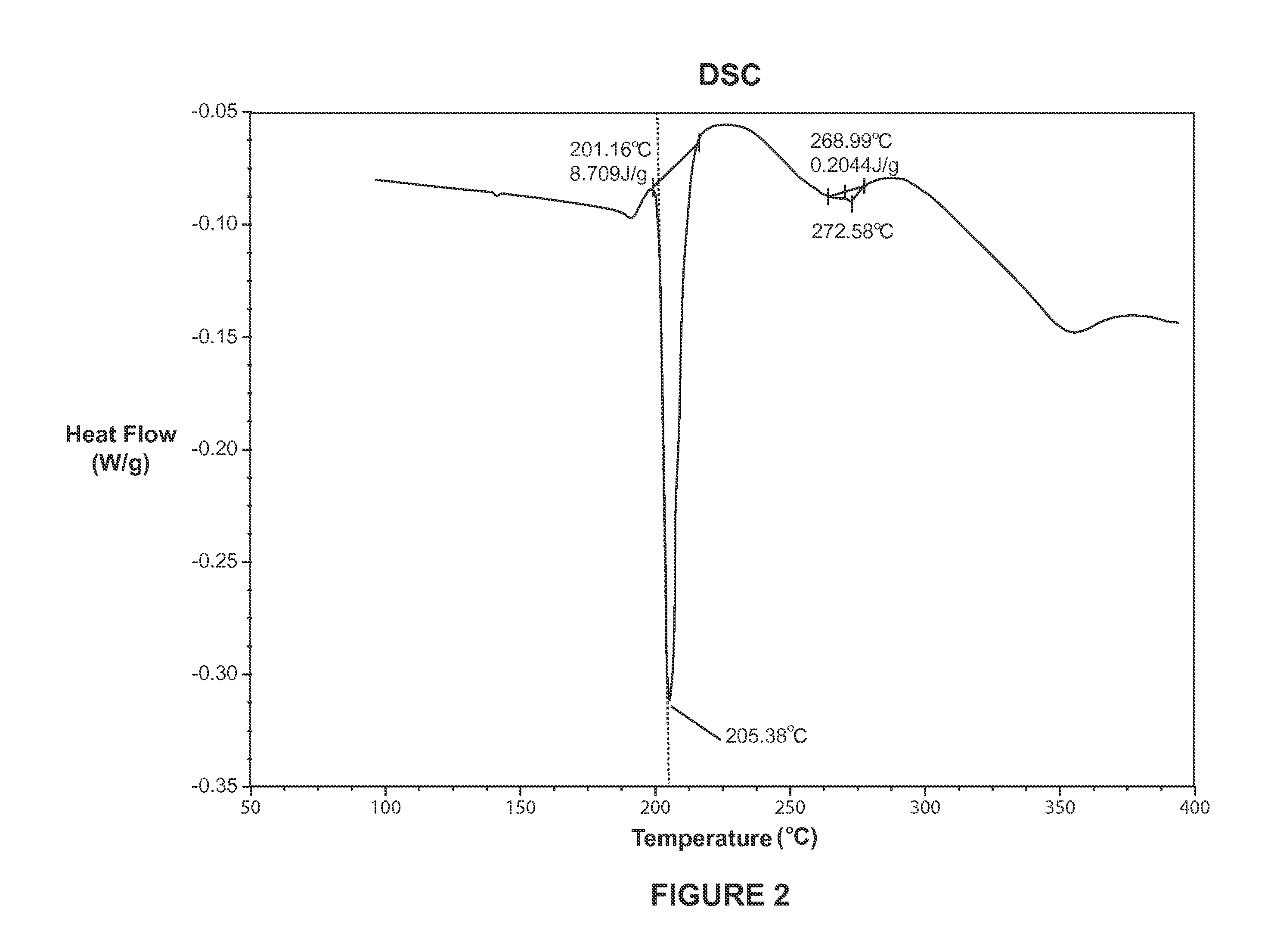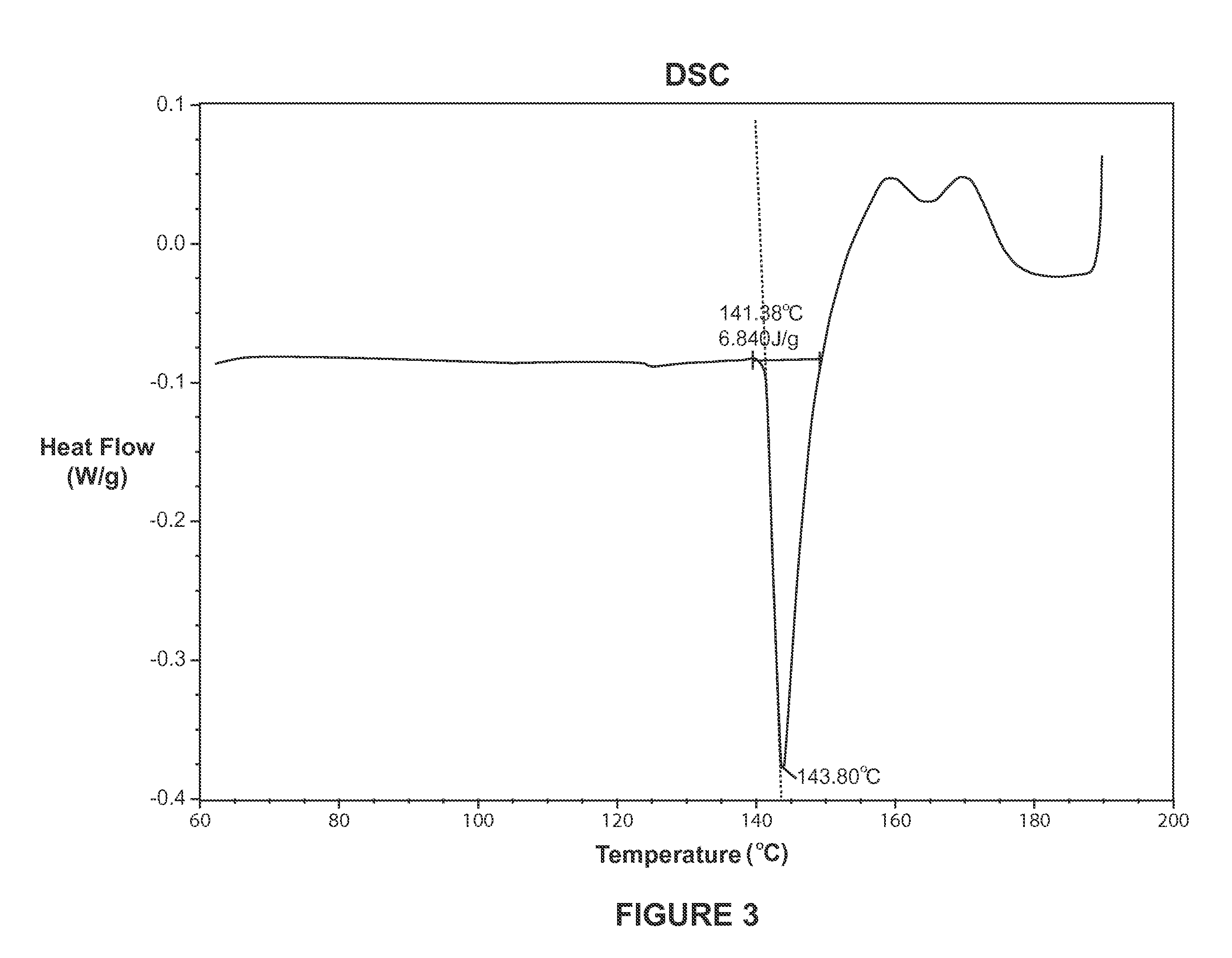Conductive compositions containing blended alloy fillers
a technology of alloy fillers and conductive compositions, applied in the field of metal compositions, can solve the problems of entrapment of plating solution, a significant issue, and a potential source of defects, and achieve the effect of facilitating the formation of desired end products
- Summary
- Abstract
- Description
- Claims
- Application Information
AI Technical Summary
Benefits of technology
Problems solved by technology
Method used
Image
Examples
example 1
[0094]To exemplify the above-described features of the invention, two or more different, but compatible, alloys were combined by mixing to form a non-standard or “blended” alloy in situ. All of the alloy powder constituents need not be molten at the desired process temperature provided that at least one of the metallic alloy powders becomes molten and that the non-molten alloy constituents are highly soluble in the molten constituent. For example, one way of mitigating the potentially deleterious characteristics of Bi in a conductive compositions is by employing an alloy of Sn and Bi in which the proportion of Bi is substantially reduced. Such an alloy is not commonly available; however, alloy powders of eutectic Sn—Bi as well as alloys predominantly comprising Sn are readily available.
[0095]Three compositions A, B and C were prepared summarized below in Table 1.
TABLE 1Compositions A, B and CComponentComposition AComposition BComposition C58 / 42 (mass %) Bi / Sn38.129.91alloy, g40 / 60 (...
example 2
[0100]Two or more different, but compatible alloys were combined. The composition was prepared by mixing the following ingredients: about 4.0 g of Bi / Sn alloy containing about 58 mass % of Bi and about 42 mass % of Sn; about 8.5 g of SAC 305 described in Example 1; about 4.0 g of the eutectic In / Sn alloy containing about 58 mass % of In and about 42 mass % of Sn; about 30.0 g of Cu; and about 5.0 g of the organic vehicle.
[0101]The above described composition contained about 65 mass % of Cu, about 25 mass % of Sn and about 5 mass % of Bi (as percentages of the total metal contents in the composition).
[0102]The process temperature was about 190° C., at which temperature the first and third alloys described above melted, homogenized with the second alloy and reacted with Cu, such that several intermetallic and / or alloy species were created simultaneously. As can be seen, the eutectic In / Sn alloy, which is the least expensive and most readily available of the indium alloys, was blended ...
examples 3-10
[0104]Various compositions were prepared by mixing the indicated compounds in the quantities shown in the following Table 3.
TABLE 3Compositions of Examples 3-10Example No.Component3456789101 mμ Cu (spherical)3.113.064.526.172.952.502.602.223 mμ Cu (spherical)16.1415.8916.0514.4015.4813.1413.5111.665-15 mμ 60 / 40 (mass %)14.3814.3815.6417.04Sn / Bi (non-eutectic)sub 625 mesh 42 / 5814.9714.9516.7617.87(mass %) SnBi (eutectic)sub 625 mesh 99.3 / 0.0715.7214.9514.9515.8317.2217.0418.15(mass %) Sn / Cusub 625 mesh SAC 30516.06Organic Vehicle (as above)6.046.046.046.046.046.046.046.04Total55.9855.9955.9455.9455.9455.9455.9455.94
[0105]The compositions shown in Table 3 contained the quantities of specific metals shown in Table 4.
TABLE 4Quantities of Metals in Compositions of Examples 3-10Example No.Component345678910Total Composition, g55.9855.9955.9455.9455.9455.9455.9455.94Total Cu, g19.2518.9420.5720.5719.8016.8017.3014.90Total alloy, g30.6931.0029.3329.3333.8036.8036.3038.70Cu, mass % of total ...
PUM
| Property | Measurement | Unit |
|---|---|---|
| melting temperature | aaaaa | aaaaa |
| melting temperature | aaaaa | aaaaa |
| melting temperature | aaaaa | aaaaa |
Abstract
Description
Claims
Application Information
 Login to View More
Login to View More - R&D
- Intellectual Property
- Life Sciences
- Materials
- Tech Scout
- Unparalleled Data Quality
- Higher Quality Content
- 60% Fewer Hallucinations
Browse by: Latest US Patents, China's latest patents, Technical Efficacy Thesaurus, Application Domain, Technology Topic, Popular Technical Reports.
© 2025 PatSnap. All rights reserved.Legal|Privacy policy|Modern Slavery Act Transparency Statement|Sitemap|About US| Contact US: help@patsnap.com



